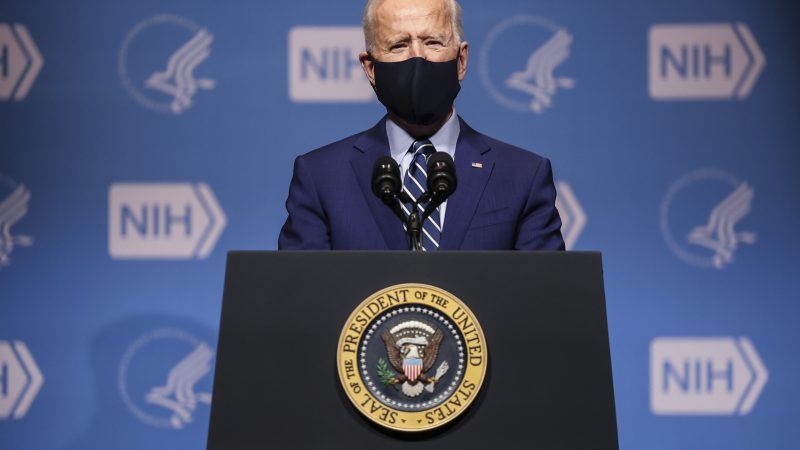State, Local Governments Are Posting Surprisingly Sunny Revenue Projections. Democrats Want To Give Them $350 Billion Anyway.
Most states managed to avoid much-predicted fiscal crises during the pandemic. Congress wants to shower them with more federal aid anyway.

Dire predictions about state budget woes turned out to be much too gloomy. Despite this, Democrats in Congress and the White House want to send the states billions more in federal aid.
Today, the House Committee on Oversight and Reform is set to mark up the $350 billion in state and local aid included in the $1.9 trillion relief package being pushed by President Joe Biden and congressional Democrats.
The plan, according to a one-pager released by the committee earlier this week, is to spend $195 billion on aid to state governments, and another $130 billion on counties and cities. The other $25 billion would be split between territories and tribal governments.
Most of the money reserved for state governments under this plan will be doled out based on each state's number of jobless workers. Each state is still supposed to get a minimum of $500 million from the feds.
This is in spite of many state governments being in pretty good fiscal shape. The Wall Street Journal reported last week that at least 18 states will close out fiscal year 2021, which ends June 30 in most states, with revenues above projections. State revenues fell only 1.6 percent in fiscal year 2020, despite early estimates that they would fall as much as 8 percent, according to the Journal.
State revenues, on the whole, are still expected to fall some 4.4 percent in fiscal year 2021, according to the National Association of State Budget Officers (NASBO). These declines, nevertheless, come after nine straight years of growing state government revenues.
Leaner revenues compared to pre-pandemic projections are still forcing states to trim their budgets. One NASBO report finds that spending is set to decline by about 1 percent during this fiscal year, which will be the first time in over a decade states enacted a net spending decrease.
"Most states are having to tighten their belts, which is not a bad thing," wrote the Cato Institute's Chris Edwards in a blog post in late January. "A course correction is needed, but there is no broad‐based 'state fiscal crisis.' Most states still have cash in their rainy day funds, and money is still flowing into their coffers from past federal aid packages."
And while the overall fiscal picture for states is one of marginally declining revenues and spending, a few are raking it in.
That includes California, where Gov. Gavin Newsom has proposed a $227 billion budget for the coming fiscal year. The Associated Press reports that this is the largest budget in the state's history. New Hampshire's budget projections are looking good enough that Gov. Chris Sununu is proposing a round of tax cuts.
There's a number of reasons for some states' surprisingly sunny fiscal shape. California's high taxes on capital gains and income have buoyed state revenues in an economic recession that's nevertheless been pretty good to the stock market and high-income earners. Rising home prices in most of the country are boosting property tax revenues, too.
The shift from consumption of services to more heavily taxed consumer goods is also helping to boost revenues, reports The New York Times.
Federal spending is also a major factor. The feds have provided some $300 billion in transfers to state governments. On top of that, stimulus checks and unemployment insurance have also boosted individual incomes, spending, and thus tax revenues.
Showering massive benefits on people and places is a hallmark of the Biden administration's approach to pandemic spending, noted Reason's Peter Suderman last week, writing that "in pressing his case for a deficit-funded $1.9 trillion legislative response to the COVID-19 pandemic and its effects on the economy, President Joe Biden has consistently argued for bigness as a virtue."
The flip side of that approach is that the federal government is accumulating record deficits and levels of national debt to provide these large, untargeted benefits.
Congress has thus far approved some $4.1 trillion in COVID-19 spending, helping to produce record deficits and levels of debt. It's now looking to add more debt to assist states that are in a much better fiscal position than the federal government is.
Rent Free is a weekly newsletter from Christian Britschgi on urbanism and the fight for less regulation, more housing, more property rights, and more freedom in America's cities.


Show Comments (50)